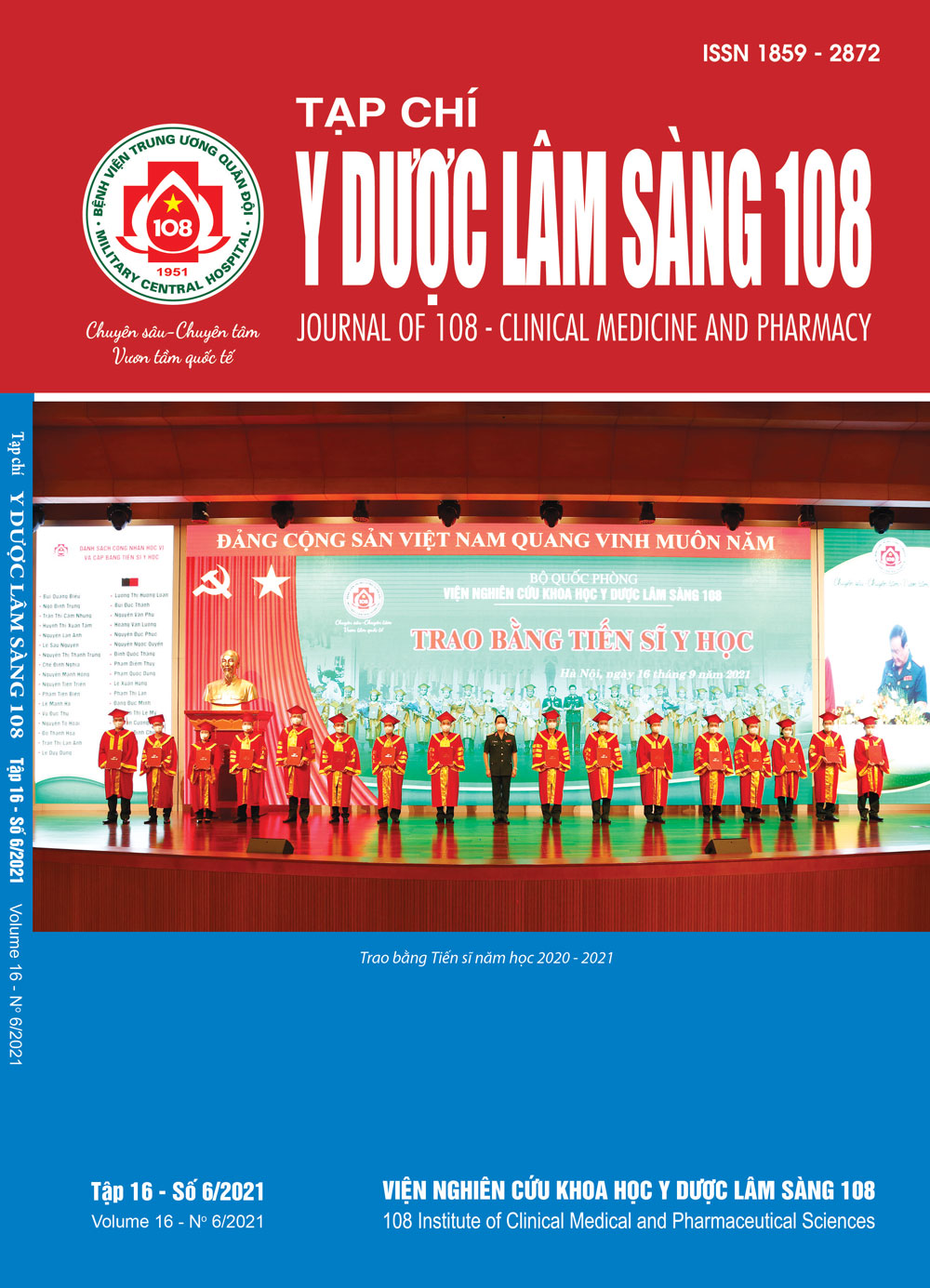Some craniofacial morphological characteristics of a bimaxillary protrusion patient treated by anterior segmental osteotomy (ASO)
Main Article Content
Keywords
Abstract
Objective: To describe some anthropometric measurements of hard and soft tissue values on preoperative cephalometric radiographs of a bimaxillary protrusion patient group that required anterior segmentation surgery. Subject and method: The subjects included the cephalometric X-rays of 21 patients (21 females, 0 male) who were diagnosed as bimaxillary protrusion and underwent anterior segmental osteotomy on the maxilla and mandible. Lateral cephalograms taken preoperatively were analysed and results are compared with groups of subjects with harmonious facial profile and groups of subjects with bimaxillary protrusion. Result: A group of 21 Vietnamese subjects aged 17 - 44 with bimaxillary protrusion. All patients were treated with anterior segmental osteotomy surgery. Measurements of the pre-surgical lateral cephalometric film showed that the subjects had maxilla protrudes in relation to the cranial plane (FH/NA (º): 93.5 ± 4.1) while mandible was positioned backwards and downwards (SN-GoGn (º): 36.4 ± 6.6; SL (mm): 38.4 ± 7.3), skeletal class II malocclusion (ANB (º): 5.7 ± 3.2), a convex profile (N’SnPog’ (º): 161.2 ± 6.1), protruding upper lip-lower lip (Li-E line (mm): 5.5 ± 2.6; Ls-E line (mm): 1.8 ± 2.2) with a decreased inter-incisor angle (IIA (º): 110.1 ± 10.9). The maxillary and mandibular incisors tended to be buccally inclined and protruded (I/MxP (º): 132.8 ± 7.6; 1u-NA (mm): 7.4 ± 2.7; IMPA (º): 101.1 ± 7.9; 1l-NB (mm): 10.3 ± 2.3). The results suggest that the SNA angle (83.4 ± 3.7) and the nasolabial angle (Cm-Sn-Ls (º): 91.7 ± 10.0) were not sensitivity indicators in the bimaxillary protrusion diagnosis. Conclusion: Generally, subjects with bimaxillary protrusion generally had a convex profile, protruding upper-lower lips, acute interincisal angle, retruding and downward-rotated mandible. Compare to Vietnamese subjects with bimaxillary protrusion who receive orthodontic treatment, our group have less protruding lips and less inclining incisors; on the contrary, skeletal discrepancy was of greater degree, which suggest that the indication for surgical treatment is reasonable. The craniofacial and dental characteristics in the Vietnamese subjects with bimaxillary protrusion were quite similar to those of other ethnic groups. SNA angle and nasolabial angle were not sensitive indicator for diagnosis of bimaxillary protrusion in Vietnamese.
Article Details
References
2. Lew K (1989) Profile changes following orthodontic treatment of bimaxillary protrusion in adults with the Begg appliance. The European Journal of Orthodontics 11(4): 375-381.
3. Tan TJ (1996) Profile changes following orthodontic correction of bimaxillary protrusion with a preadjusted edgewise appliance. Int J Adult Orthodon Orthognath Surg 11(3): 239-251.
4. Scott SH and Johnston Jr LE (1999) The perceived impact of extraction and nonextraction treatments on matched samples of African American patients. American journal of orthodontics and dentofacial orthopedics 116(3): 352-358.
5. Rosa RA and Arvystas MG (1978) An epidemiologic survey of malocclusions among American Negroes and American Hispanics. American journal of orthodontics 73(3): 258-273.
6. Võ Trương Như Ngọc (2010) Nghiên cứu đặc điểm kết cấu sọ mặt và đánh giá khuôn mặt hài hòa ở một nhóm người Việt tuổi từ 18-25. Trường Đại học Y Hà Nội.
7. Tuan Anh T, Dang T, An N et al (2016) Cephalometric norms for the Vietnamese population. APOS Trends in Orthodontics. 6200.
8. Nguyễn Thị Bích Ngọc (2015) Nghiên cứu sự thay đổi hình thái mô cứng, mô mềm của khuôn mặt sau điều trị chỉnh răng lệch lạc khớp cắn Angle I, vẩu xương ổ răng hai hàm có nhổ răng. Trường Đại học Y Hà Nội.
9. Tuan Anh T (2017) Nghiên cứu một số đặc điểm hình thái, chỉ số đầu-mặt ở một nhóm người Việt độ tuổi từ 18-25 có khớp cắn bình thường và khuôn mặt hài hoà. Trường Đại học Y Hà Nội.
10. Bills DA, Handelman CS and BeGole EA (2005) Bimaxillary dentoalveolar protrusion: Traits and orthodontic correction. The Angle Orthodontist 75(3): 333-339.
11. Kim JR, Son WS and Lee SG (2002) A retrospective analysis of 20 surgically corrected bimaxillary protrusion patients. Int J Adult Orthodon Orthognath Surg 17(1): 23-27.
 ISSN: 1859 - 2872
ISSN: 1859 - 2872
